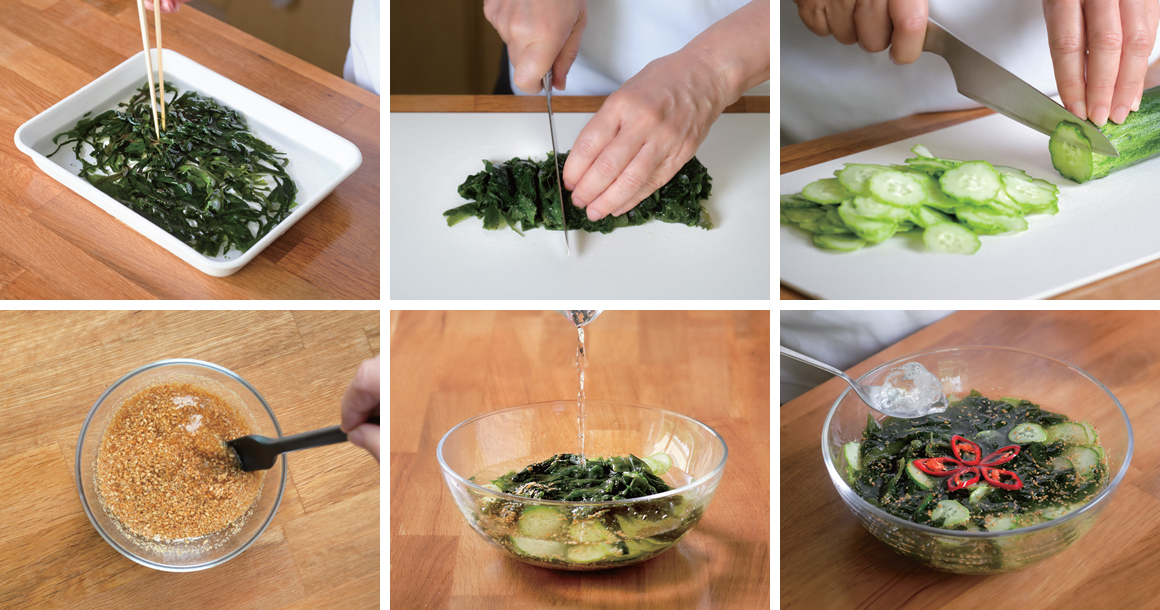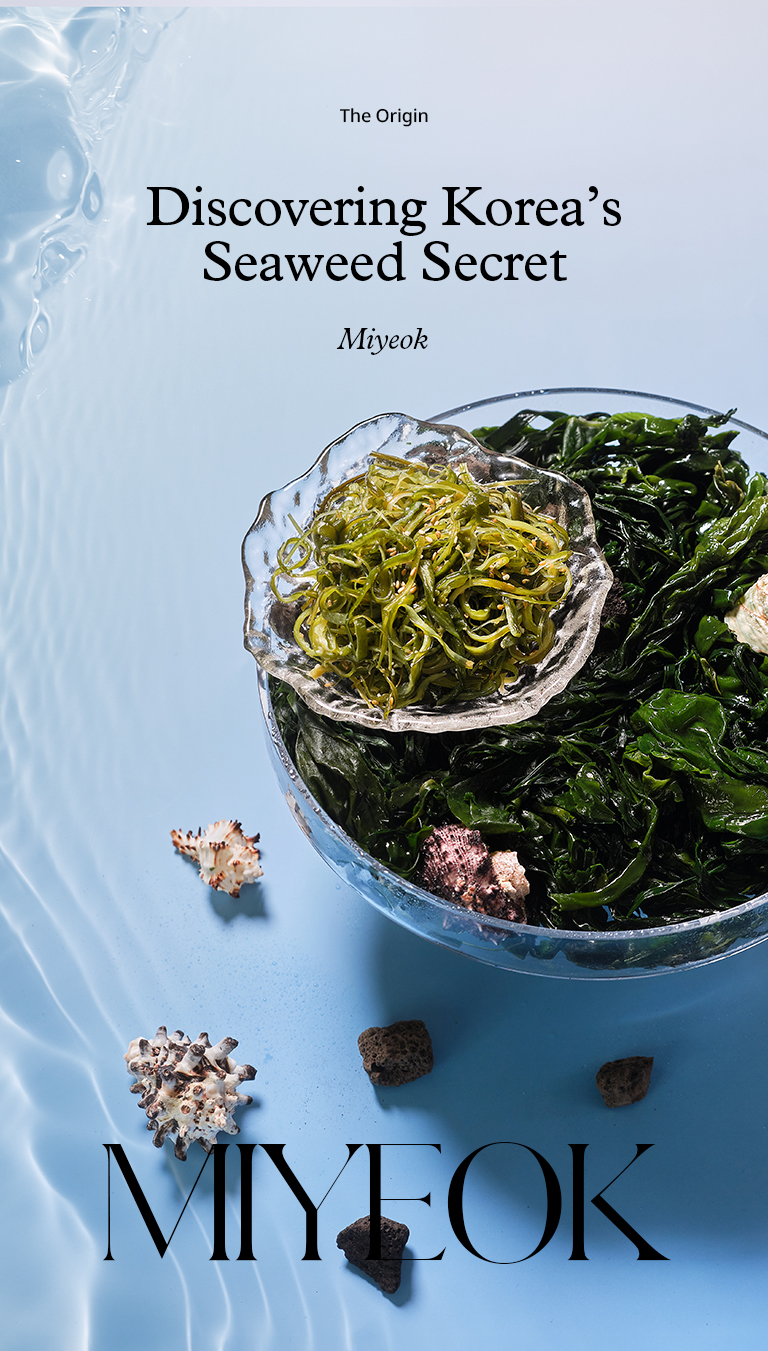
For most Westerners, no birthday celebration is complete without a candle-laden cake. Koreans, however, consider something quite different to be essential birthday food: a hot bowl of miyeokguk, soup made from miyeok (brown seaweed). But what is miyeok? And why are Koreans so keen on it? It’s time to find out.
Writer. Tim Alper
For sailors in many parts of the world, miyeok (Undaria pinnatifida, seaweed) is a minor annoyance. Miyeok is a hardy seaweed that thrives by attaching itself to rocks or artificial submerged objects. Sailors often have to remove it from rocks near ports, ship hulls and anchor chains with scraping tools or high-pressure water jets.
But Korean farmers and coastal communities long ago discovered a way to use this very feature of miyeok to their own advantage—and forage or cultivate a delicacy whose flavor is only eclipsed by its remarkable health benefits.
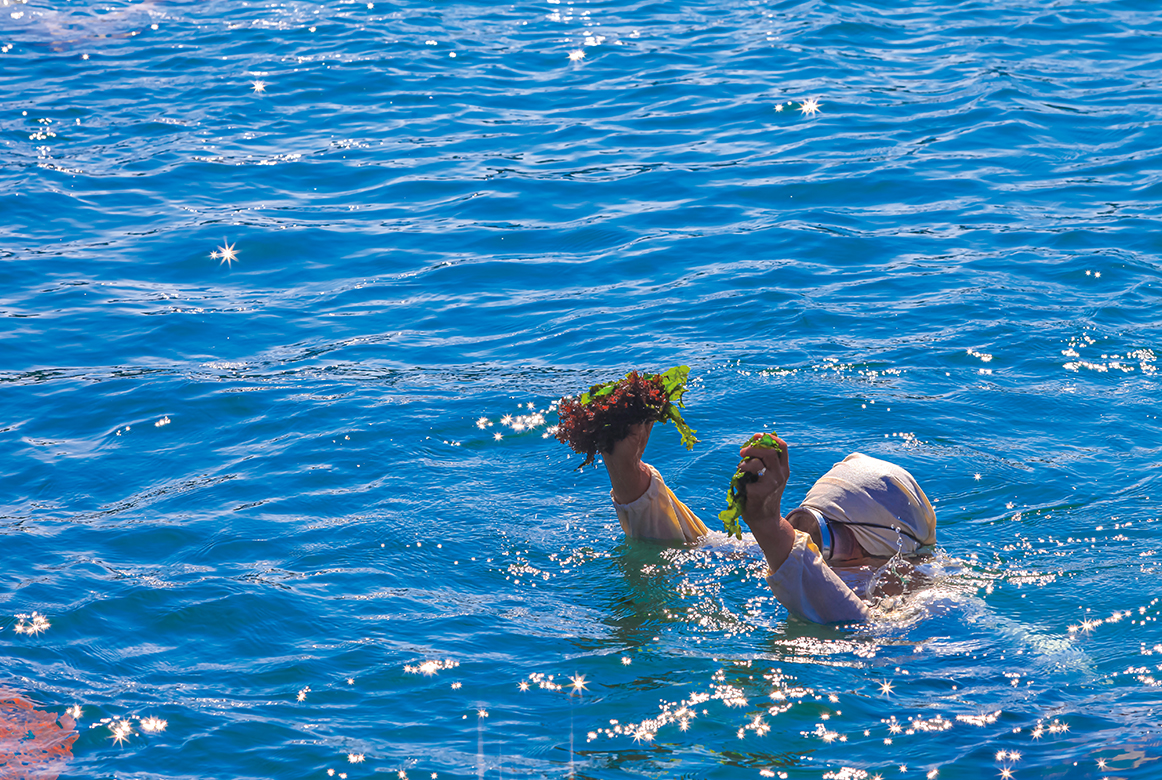 Haenyeo (Korean women divers) collects miyeok from the sea © TongRo Images Inc.
Haenyeo (Korean women divers) collects miyeok from the sea © TongRo Images Inc.
Nobody knows exactly when Koreans began eating miyeok. However, Goryeodogyeong— historical records about the Goryeo Dynasty (918–1392), compiled after the author’s visit to Goryeo in 1123—already provide evidence of its widespread consumption. Another historical document, Goryeosa (The History of Goryeo), describes some of the ways miyeok was prepared, while yet another mentions that Goryeo kings sometimes granted their subjects the right to harvest seaweed from specific plots.
Wild miyeok thrives in the seas around Korea, and is still harvested by the haenyeo, the country’s remarkable female free divers. Without the aid of oxygen tanks, haenyeo plunge beneath the waters to the rocks where they suspect miyeok will grow, returning to the shores with baskets heaving with seaweed.
This method predates most forms of modern technology, and is likely several centuries old. In the modern world, haenyeo in Tongyeong, Jeju Island and Jindo Island still practice their ancient craft, with their hand-picked delights fetching a high price on the domestic (and international) market.
But agriculturalists discovered that they too could reap vast, high-quality miyeok harvests if they studied the plant’s unique life cycle. They soon learned its secrets. In spring, they would wade in shallow seaweed beds in search of spores. They would collect these and supervise their growth in seawater-filled vessels. Then they would return the miyeok to the sea, along with thick ropes, which the young plants would naturally attach themselves to.
Over time, farmers discovered that they could create what look like small floating islands using materials like bamboo, to let the miyeok sit in deeper waters away from the shore. In modern Korea, farmers have begun using modern, durable materials to create durable buoys that hold ropes in place until the miyeok is mature—and ready for harvest.
 Miyeok grows best in shallow, sunny, fast-moving water. It also prefers rocky, rough environments. © Gettyimages Korea.
Miyeok grows best in shallow, sunny, fast-moving water. It also prefers rocky, rough environments. © Gettyimages Korea.
Pulled fresh from the sea, miyeok may look somewhat unappetizing, although it is surprisingly flavorful when eaten unpreserved. Most miyeok, however, is air-dried. Traditionally, this involved untangling the plant’s strands, laying them out flat, and leaving them to dry in the sunshine and stiff breezes so common in Korean coastal areas. This process causes the strands to shrink and become hard, making them much easier to transport—and eventually sell.
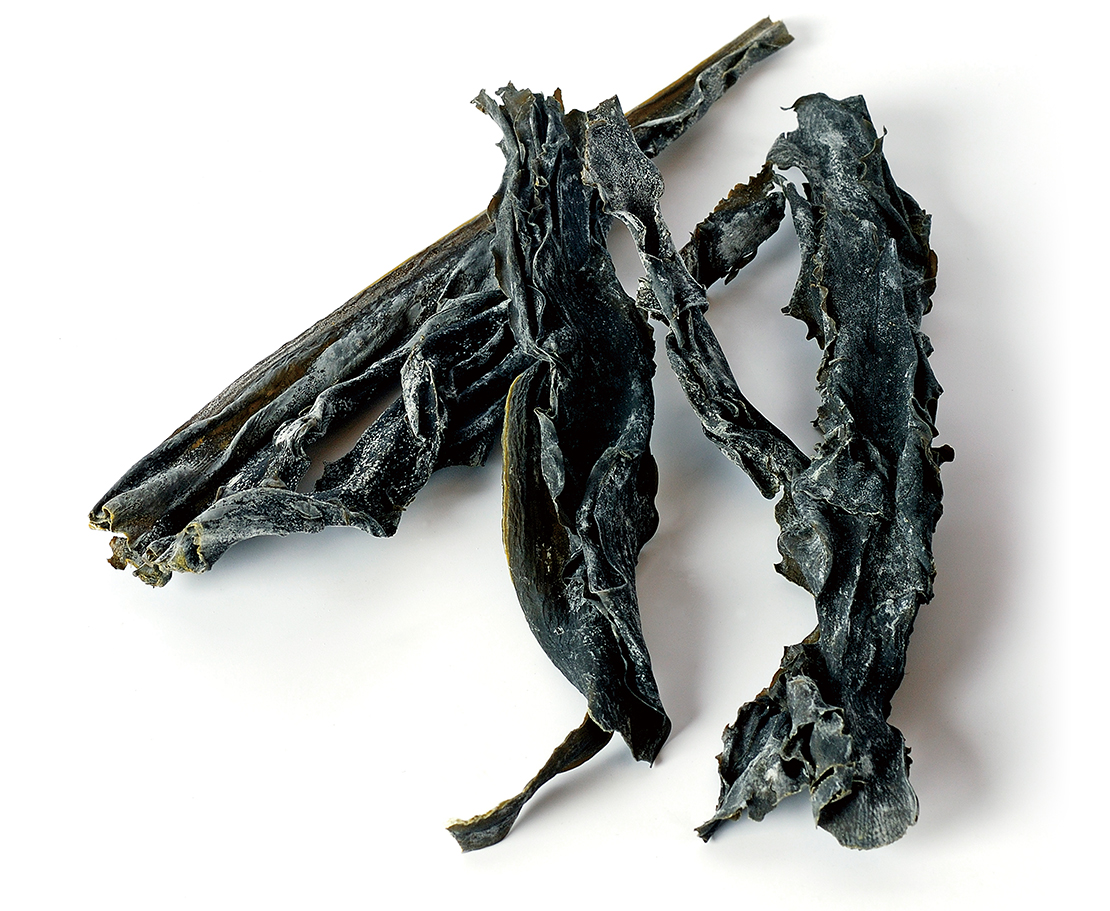 Dried miyeok is small, light and hard. When soaked, it expands more than ten times. © TongRo Images Inc.
Dried miyeok is small, light and hard. When soaked, it expands more than ten times. © TongRo Images Inc.
Miyeok has a whole host of health benefits. Unlike land-based plants, it is high in eicosapentaenoic acid (EPA), a long-chain omega-3 fatty acid. EPA is associated with a range of health advantages, including good heart health, enhanced brain function and low inflammation rates. Research also suggests it may reduce triglyceride levels, decrease cardiovascular disease risk and improve human cognitive abilities.
It is also rich in iodine, a mineral that is essential for thyroid hormone production, regulating metabolism and brain development. Iodine has also been linked to reduced risk rates for certain forms of cancer. Miyeok is also high in calcium, iron, fiber and the vitamins A, C, E and K.
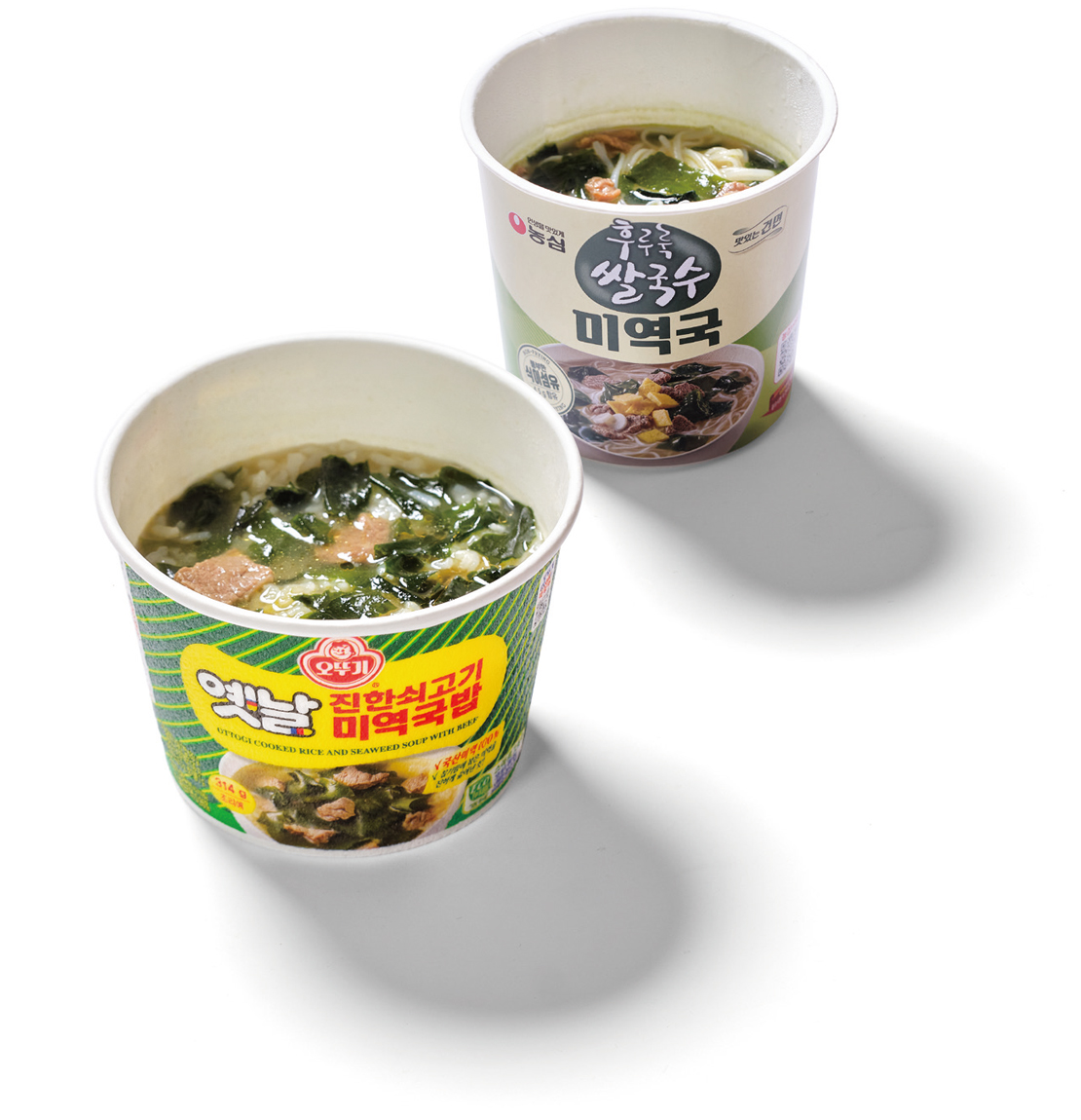 Miyeokgukbap (seaweed soup and rice) and instant noodle with miyeokguk developed in Korea
Miyeokgukbap (seaweed soup and rice) and instant noodle with miyeokguk developed in Korea
By far and away the most popular Korean dish that makes use of miyeok is the aforementioned miyeokguk (seaweed soup). Most commonly made with beef brisket, garlic and sesame oil and served with steamed rice, this is one of Korea’s best-loved and most ubiquitous soups. Cooks simply need to soak their dried miyeok in cold water for 30 minutes before cooking. This process can cause the miyeok to increase in size by up to 10 times.
Some cooks prefer to make a seafood version, with mussels or anchovy stock. However, it can also be made without any animal products whatsoever, using mushrooms in place of meat—and sometimes cubes of tofu to boost the preparation’s protein content.
 1. Miyeokguk can include not only beef but also seafood like sea urchin and clams.
1. Miyeokguk can include not only beef but also seafood like sea urchin and clams.
2. Sogogimiyeokguk (beef and seaweed soup)
The dish has enormous cultural significance in Korea. Visiting Tang Dynasty (CE 618-907) writers noted that Koreans associated miyeok with childbirth after observing whale behavior. After giving birth to their calves, Koreans reportedly noted that female whales would instinctively begin consuming large amounts of miyeok.
Whether or not Koreans took their dietary cues from whales, the connection between childbirth and miyeokguk has been set in stone for centuries. Its many health benefits, now backed by modern scientific research, likely helped perpetuate the belief that this was essential food for nursing mothers.
After giving birth, Korean women typically eat miyeokguk for days, even weeks, in the belief that this helps with lactation and replenishing the nutrients lost during the rigors of childbirth. This has given rise to the tradition of eating miyeokguk on one’s birthday—paying tribute to one’s mother, who endured the hardships of childbirth on their behalf.
Miyeok can also be consumed in other preparations, including stir-fries. Some also enjoy cold miyeok-based soups, a vinegary delight on a hot, humid summer’s day. And as Korean food continues to gain popularity around the world, inventive cooks at home and abroad have begun experimenting with the ingredient, using miyeok in everything from vinaigrette-rich summer salads to baked goods like biscuits and bread. With its mouthwatering flavors and its myriad health benefits, miyeok’s popularity may well spread further in the years to come.
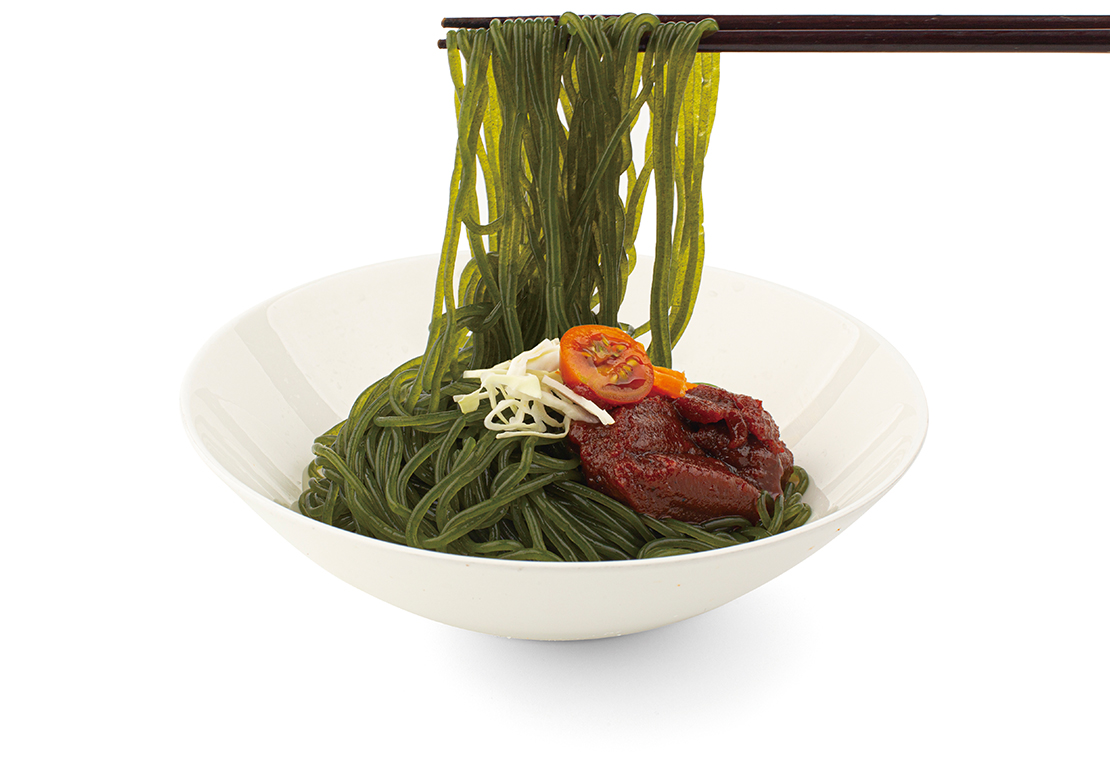 Miyeok is low in calories and rich in minerals and vitamins, so it is often used in noodle products as a substitute for wheat noodles. © TongRo Images Inc.
Miyeok is low in calories and rich in minerals and vitamins, so it is often used in noodle products as a substitute for wheat noodles. © TongRo Images Inc.
1 cucumber, 10g dried miyeok, 400ml water, 1 red chili pepper, 1 Tbsp ganjang (soy sauce) for soup, 1/2 Tbsp minced garlic, 4 Tbsp vinegar, 2 Tbsp sugar, a pinch of salt (optional), sesame seeds (optional), ice (optional)
